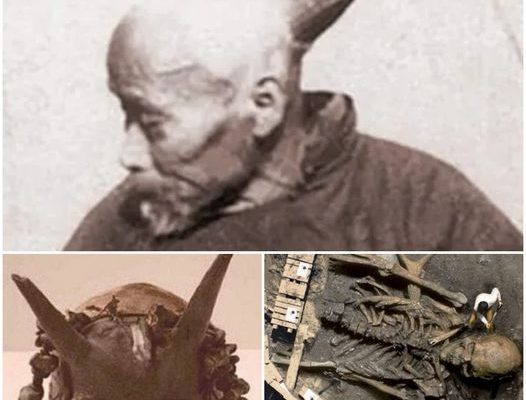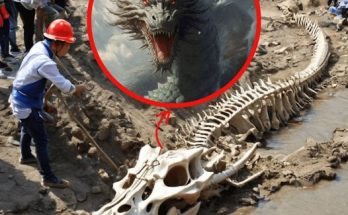In the annals of archaeological exploration, the discovery of an ancient giant “horned” skull at Sayre is a mysterious and intriguing discovery that continues to spark curiosity and speculation. Dating back to the 1880s, this enigmatic find has left an indelible mark on the world of archaeology, inviting us to delve into the depths of the past and contemplate the mysteries it holds.
The ancient giant skull, adorned with what have been described as “horns,” captures the imagination and invites us to explore the boundaries of human history and understanding. This anomaly challenges conventional notions of human anatomy and cultural practices, offering a tantalizing glimpse into the beliefs and rituals of a bygone era.
The discovery, made during an archaeological dig in the 1880s, takes us back in time and offers us a window into the world as it was centuries ago. This unique skull, with its intriguing ornamentation, challenges us to question our assumptions about ancient civilizations and the myriad ways they expressed their identities and beliefs.
During an archaeological dig in Sayre, Bradford County, Pennsylvania, in the 1880s, several human skulls were found. Except for the peculiarity of their projections (two prominent “horns” two inches above the eyebrow) and the fact that their average height in life would have been about seven feet, these skeletons were anatomically accurate.
The skeletons were at least 2.1 meters tall and had horn-like protrusions just above the eyebrows on their heads.

It was at the end of the 19th century, in the late 1880s, when a group of scientists were on an expedition in Bradford County, Pennsylvania, near the New York state border in the northeastern region of the state.
The delegation, which included a Pennsylvania state historian, two professors and a member of the Presbyterian church hierarchy, had traveled to Sayre after becoming intrigued by a succession of what appeared to be burial mounds.
Professors A.B. Skinner and W.K. Moorehead of the American Research Museum and Phillips Academy in Andover led their groups into the first of the mounds to begin a meticulous excavation. What they discovered has puzzled scientists for nearly a century.

The crew discovered three male remains after thoroughly clearing away dirt and stones. The burial date of the skeletons is believed to be around 1200 AD. So far, nothing out of the ordinary. They measured the remains and examined the structure more closely after that. It was soon determined that the men were over seven feet tall, a height (within the group) unheard of in ancient times.
A careful study of the skulls of the mysterious men revealed that they had horns, two of which were an intrinsic part of each head. It was impossible to find them, but they were there. Giants with horned heads over two metres high who perished more than 800 years ago!

The excited experts carefully packed the bones for shipment and delivered them to the American Research Museum in Philadelphia for further inspection. For months, experts there pondered the strange remains.
The skulls were later claimed to have been misplaced, stolen or lost from the museum. In their official excavation reports, neither Donehoo, Skinner nor Moorehead mentioned the discovery of human bones at Sayre with gigantism or horned protuberances. And stories about this strange find appeared in newspapers and magazines, then disappeared and were never seen again, taking with them the enigma that will remain forever unsolved.



